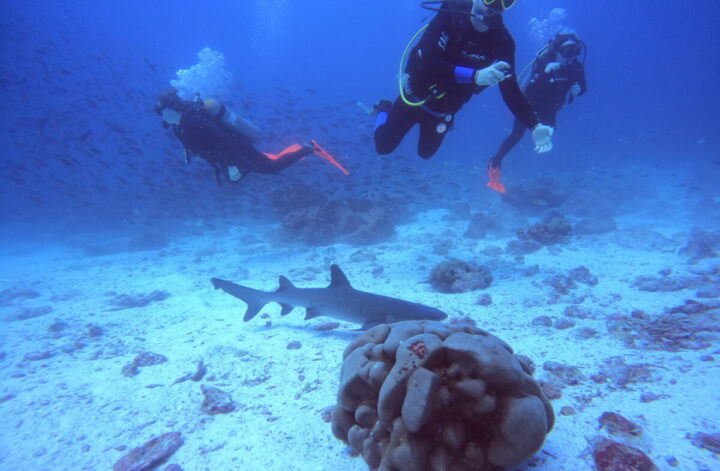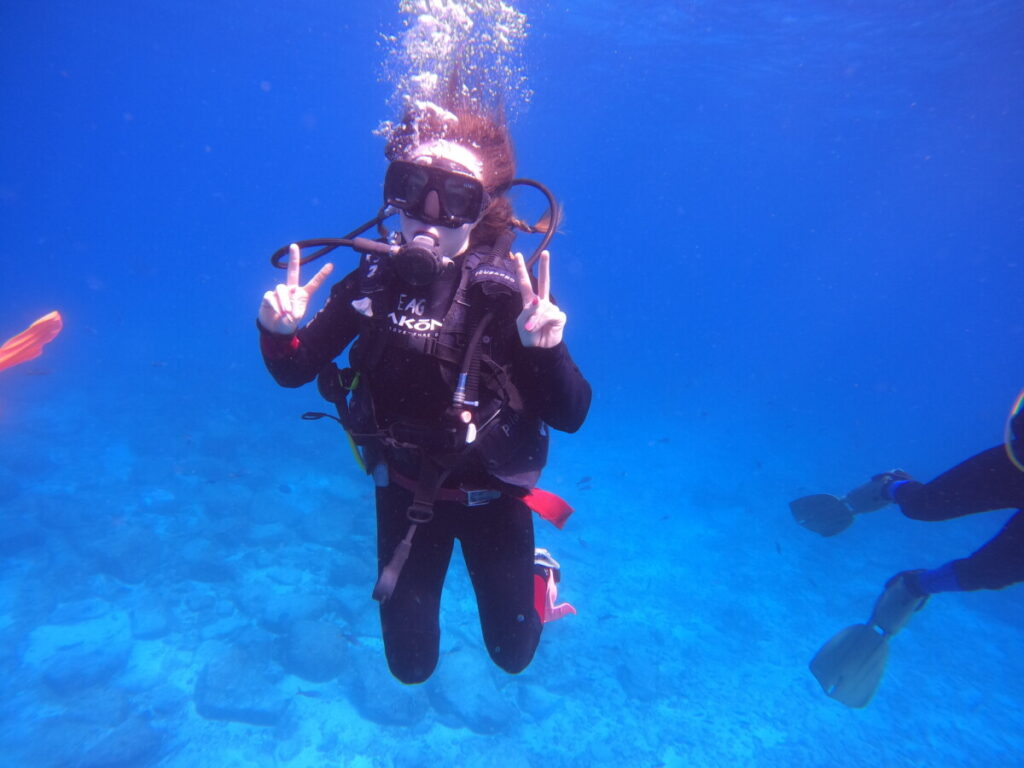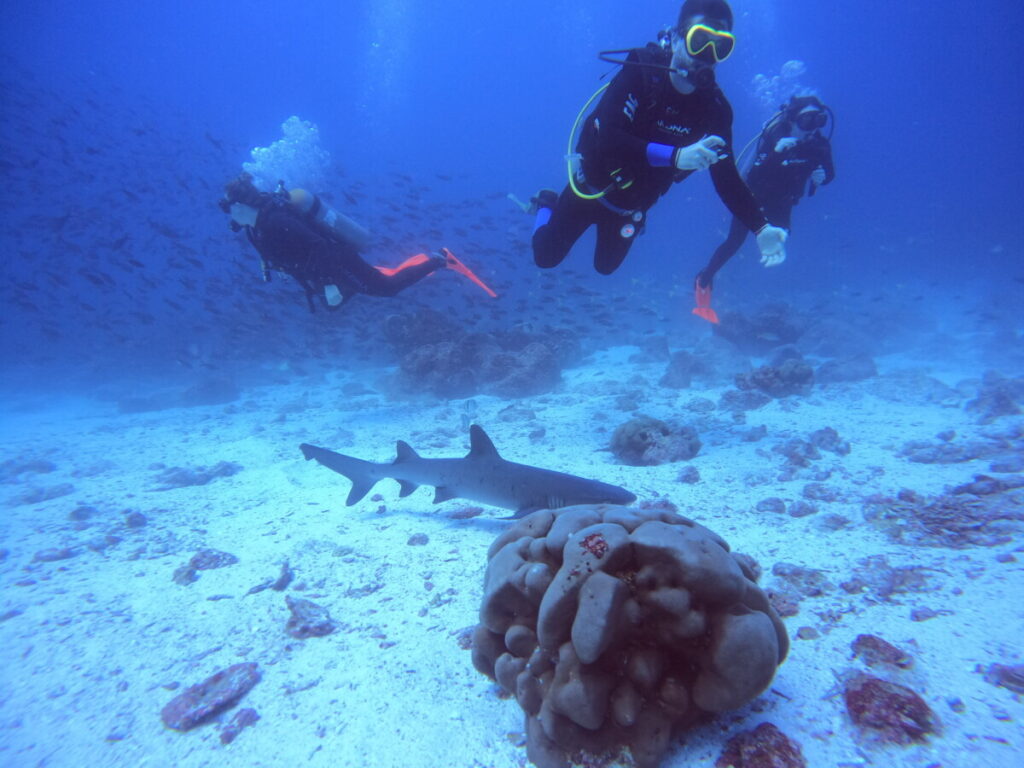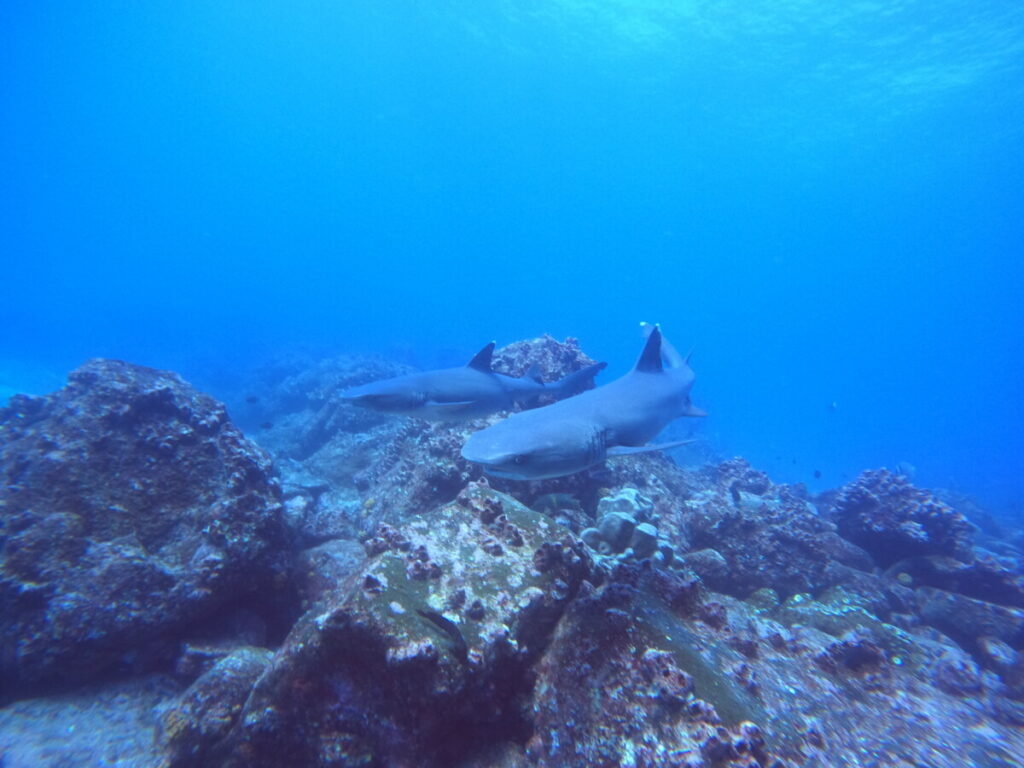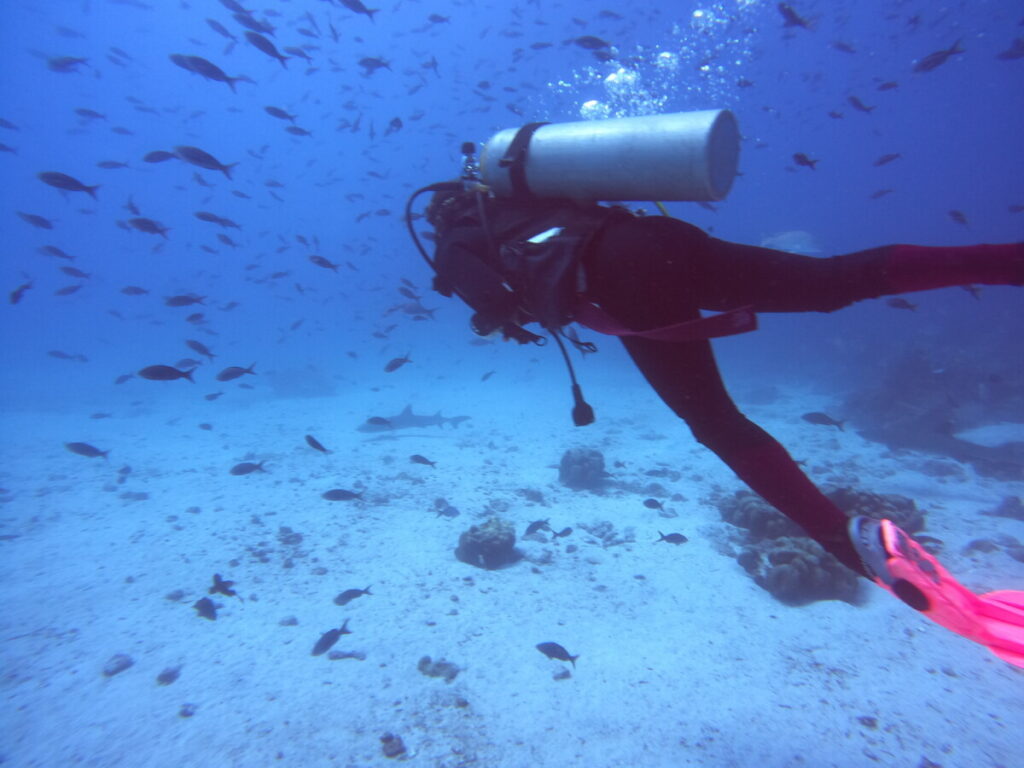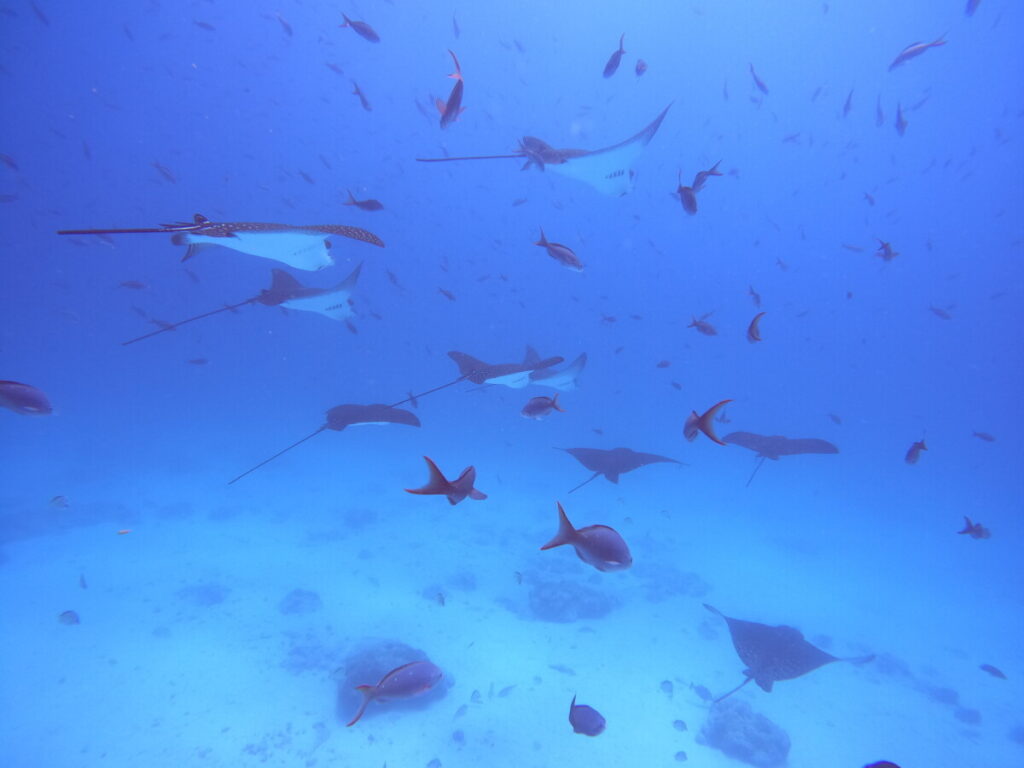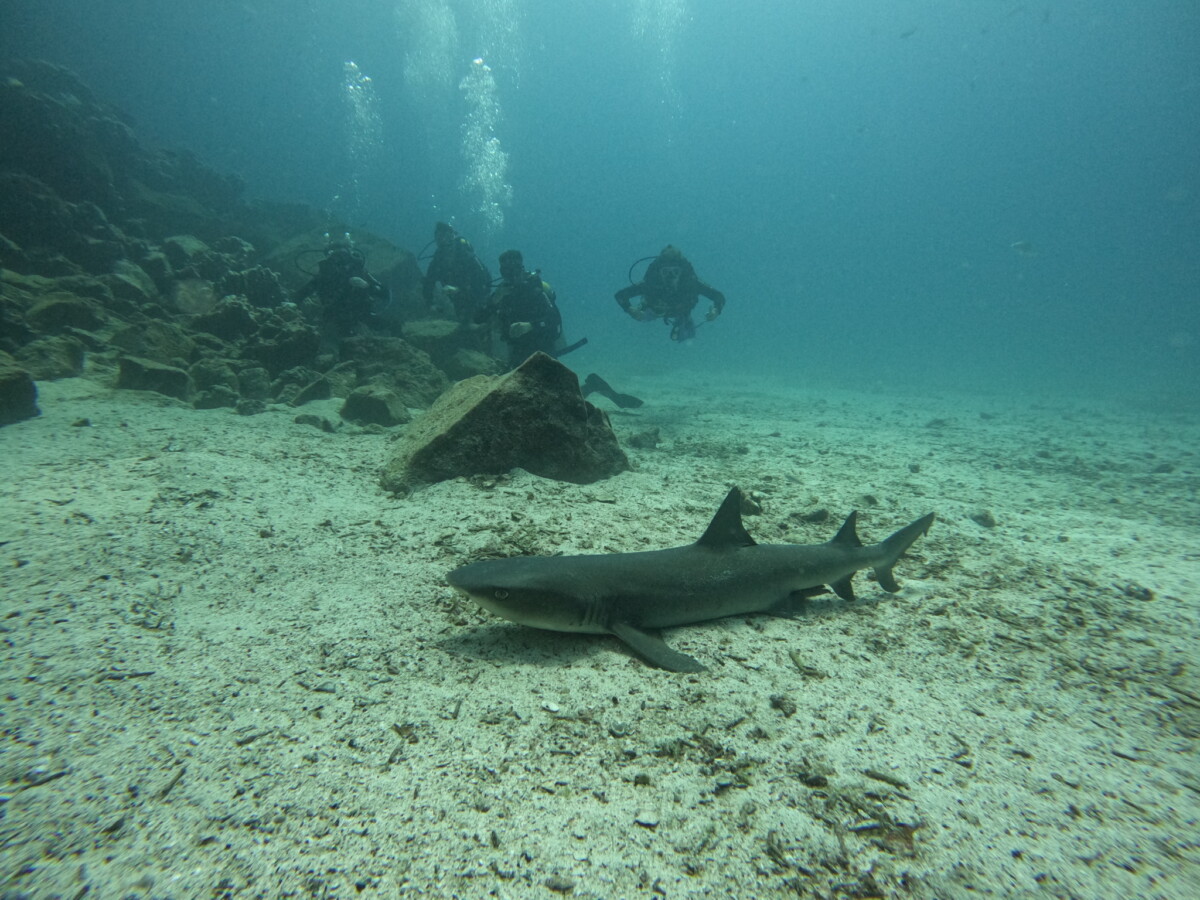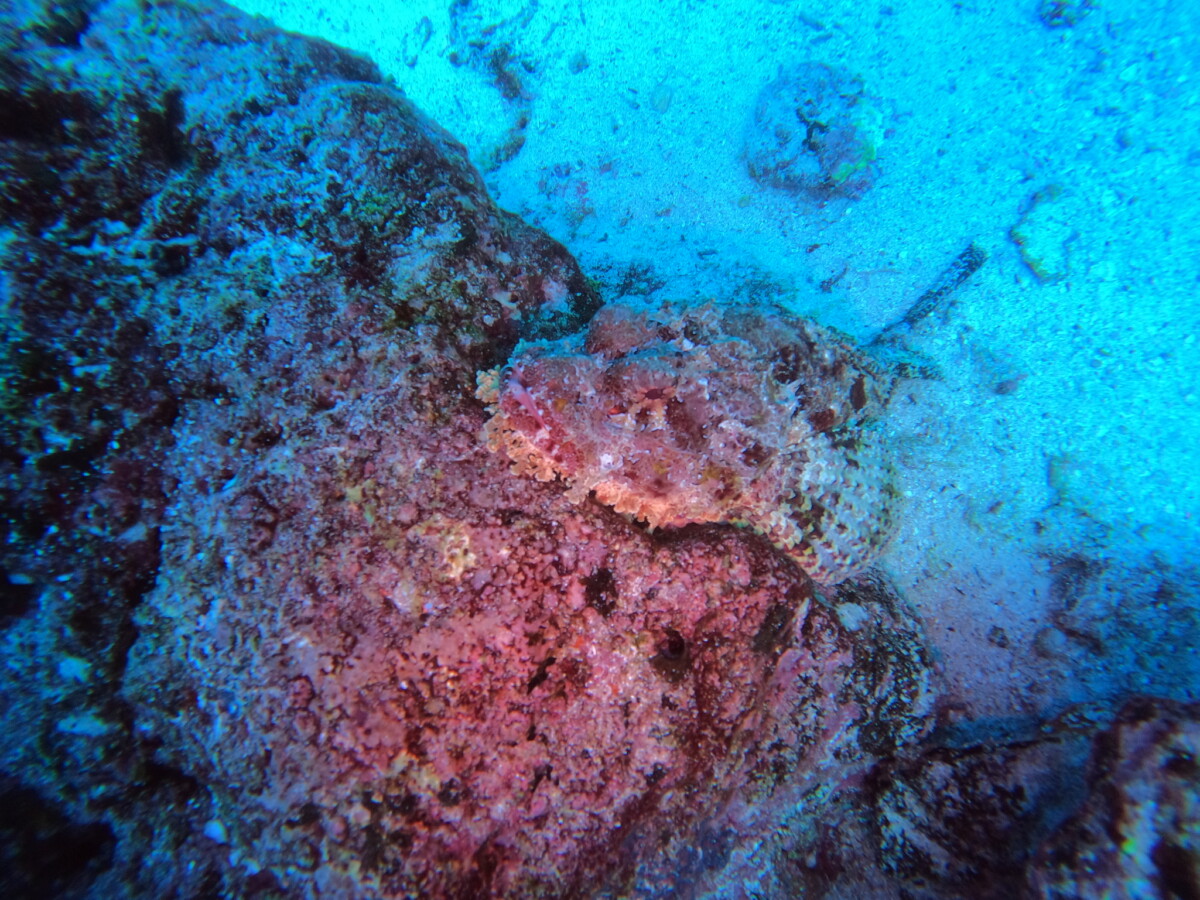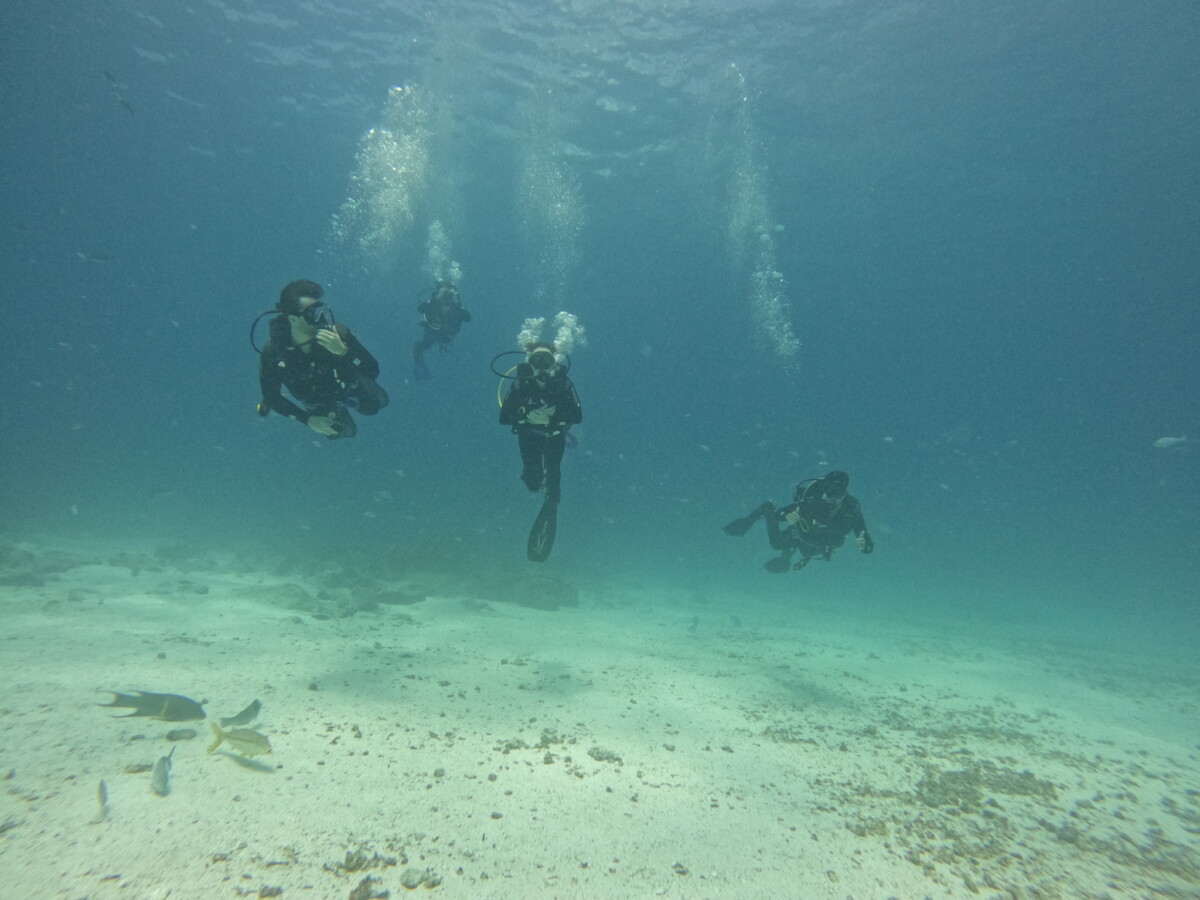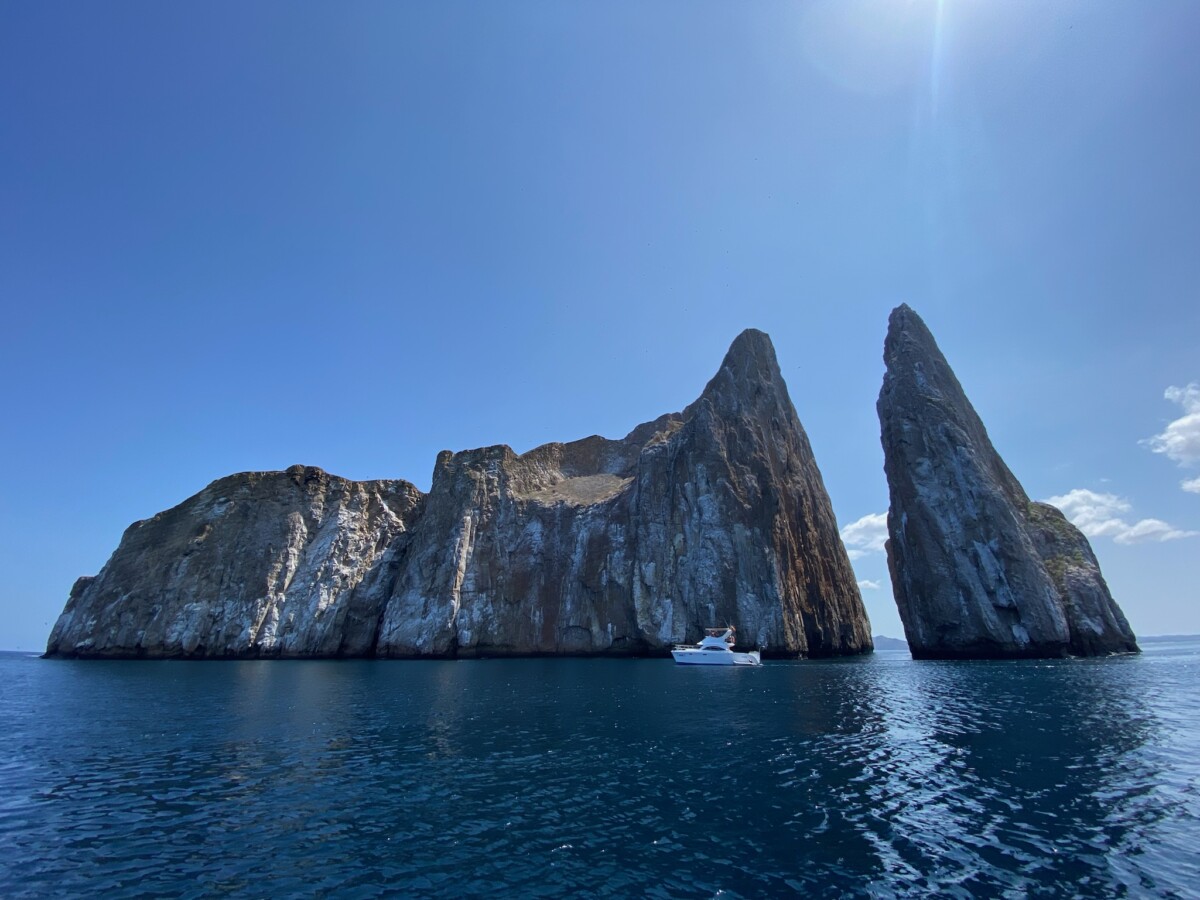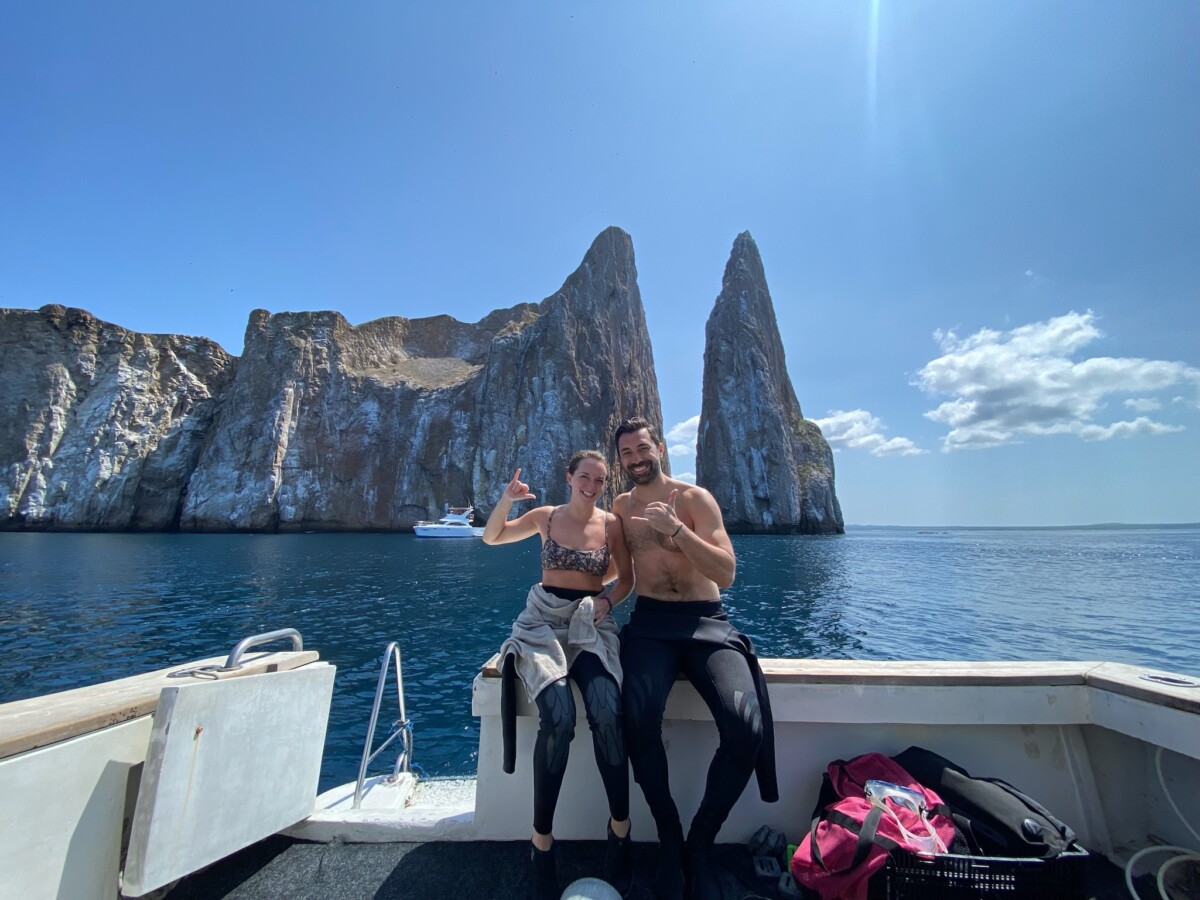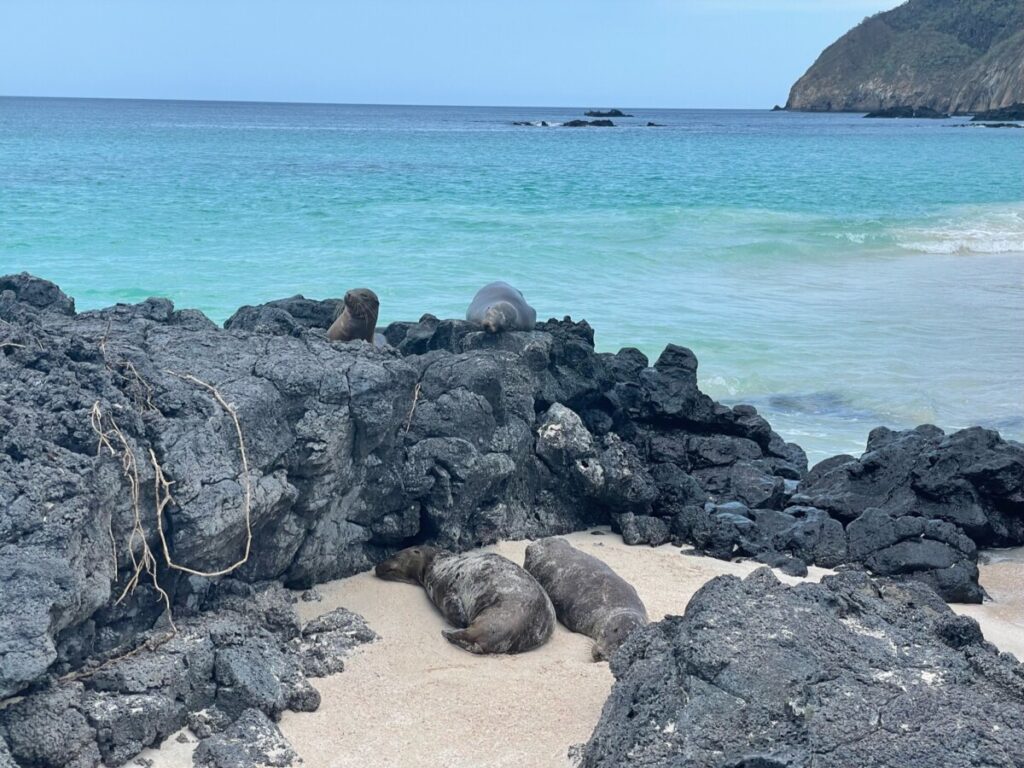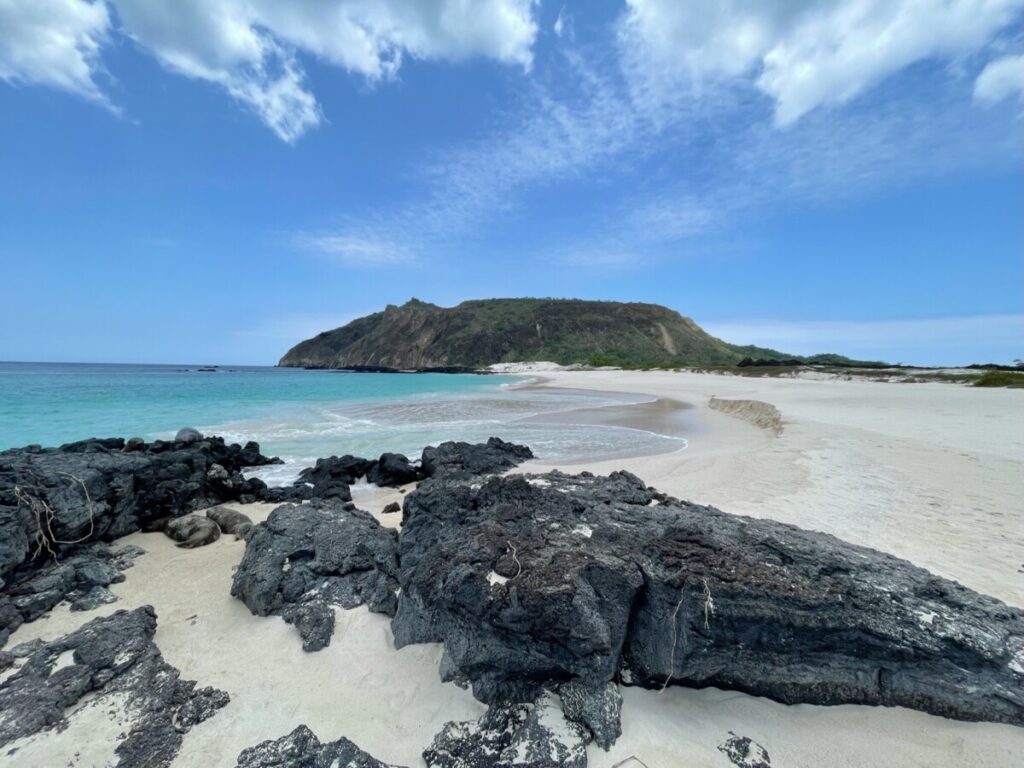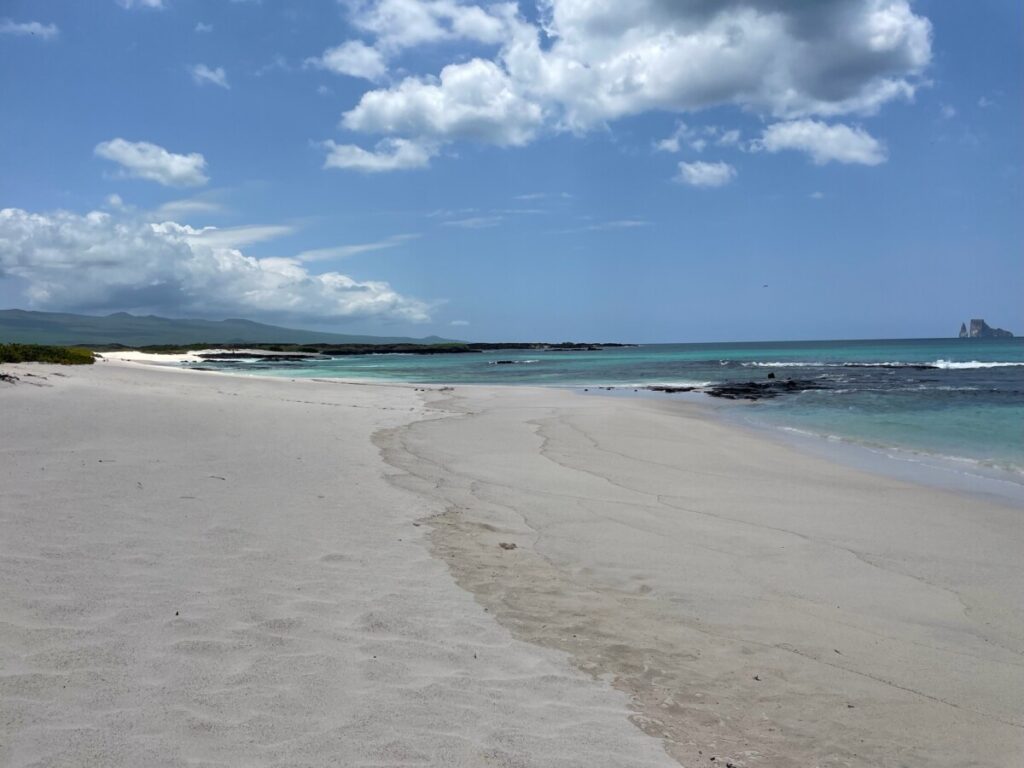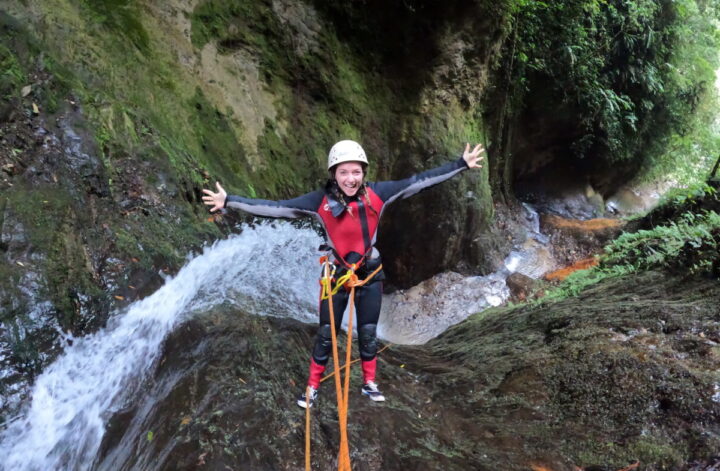Looking for beginner dive spots in the Galapagos? Santa Cruz and San Cristobal have plenty to choose from! During our stay in the Galapagos back in February, we booked three different dive experiences through three different dive companies. Here are the best places to dive in Santa Cruz and San Cristobal islands for beginners.
I only got my PADI Open Water certification last year in Cancún, and I hadn’t been diving in over seven months when we visited the Galápagos, so I was a bit nervous to get back underwater. Happily, all three dive centers we used were trustworthy, friendly and most importantly took safety super seriously. I would book with all three again. Here are some details about my beginner diving experience in Santa Cruz and San Cristobal.
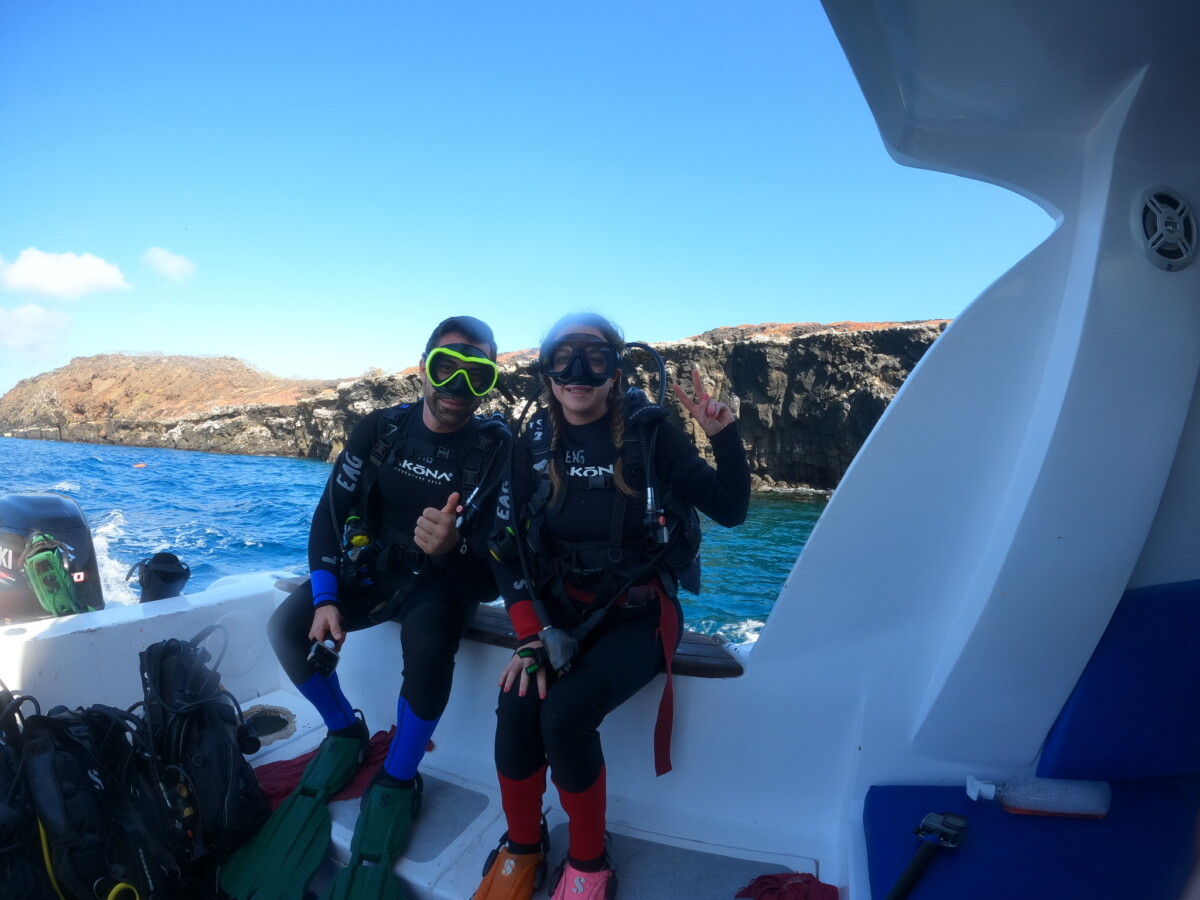
About beginner diving in the Galapagos
To help regulate the amount of divers per site per day, the dive shops have a pretty set schedule. It’s the same week over week so there are never too many divers at any one location. We booked all our dives online, in advance, but it’s possible to book the day or a few day prior as long as you’re not picky.
For all our dives, we met at the dive shop the evening before to try on our wetsuits and other equipment. All three dive centers included transportation, snacks and lunch onboard and towels. I have to say, I wasn’t expecting much for lunch or snacks, but each meal was better than the last. The two dives in Santa Cruz also included digital photos that they transferred to our phones immediately.
In all cases, they clearly labeled the equipment and brought it to the boat for us along with our tanks. They also set up our equipment, transferred it between dives, and took care of everything after the dive. Before each dive, the dive master reminded us of all the safety procedures, underwater hand signals and what to do in case of a few rare emergencies. They then briefed us on our dive and clearly explained what we were likely to see.
In February the air was warm, about 75 – 85F and the water was nearly equally warm, about 75F (24C). We still wore 5 mm full length wetsuits and booties. Some of the dive masters just wore swimsuits and long sleeve tops. I did get cold towards the end of the dives, but otherwise I was very comfortable throughout.
Beginner dive spots in Santa Cruz
For our first dive day, we booked through Eagleray Tours Galápagos Diving. This was probably my favorite of the three dive centers in terms of safety, quality of equipment and friendliness of the dive masters and crew. We set out from Puerto Ayora bright and early and headed back towards Baltra to load the dive boat and jet over to North Seymour. It’s only about a 20 minute boat ride.
Diving at North Seymour Island
This first dive was my favorite of all six. We saw everything all in one go. I honestly felt like I had been plopped into an aquarium tank. The water was clear and the sea creatures and fish just kept coming one after another. I didn’t know where to look. I barely needed to swim to see it all. Already we saw everything: hammerhead sharks, white tip reef sharks, Eagle rays, spotted rays, sea turtles and plenty of schools of fish and starfish. I could go on and on.
Diving at Daphne
Nearly as good as the first dive, but this time we saw Galapagos sharks and black tip reef sharks instead. These sharks are a bit bigger than the others and seemed more active.
Swimming with dolphins
After our dive, we had the rare experience of spotting a pod of hundreds of dolphins swimming the opposite direction. We finished our dive and looped back to jump in with our masks and swim with the pod. This might be the highlight of my entire experience in the Galapagos, it was beyond magical.
Diving at Mosquera Island
On day two, we dove with Shark Bay Dive Center. Our first dive was also at North Seymour Island, in a slightly different location. After snacking and about a one hour break, where we were able to swim or lounge on the sun deck, we dove at Mosquera Island. Mosquera is clearly visible from North Seymour and a very short ride away. Here we saw much larger sharks than we’d previously seen, mostly black tip reef sharks and some larger rays and eels.
Kicker Rock, San Cristóbal
From San Cristóbal, we dove with Chok’s Scuba Dive Center. The dive center is just in town. What’s great about San Cristóbal is that the port is right there too. In Puerto Ayora you need to drive about 40 minutes to the other side of the island to enter the water. In this case, we hopped onto the Valeria I with some other snorkelers and set out for about one hour to Kicker Rock.
The Valeria I is an experience in itself. The yacht staff and Dive Master welcome you aboard and introduce you to Valeria. There are snacks, coffee, tea and plenty of places to enjoy the ride. After diving we enjoyed a delicious meal aboard and there were even snacks for the ride home. Fresh towels were ready and there was plenty of space for everyone.
Diving at Kicker Rock
As we approached Kicker Rock, we could see the tall formation on the horizon. It’s no wonder this is such a popular diving and site seeing destination. In Spanish, this rock is called ‘León Dormido’ or the sleeping lion. It’s the remains of a volcanic cone that eroded from the sea hundreds of years ago. Not only is this a great snorkel spot, but it’s also a unique place for bird watching.
But the true surprise is underwater. As the water is quite deep here, you would never be able to expect what you find beneath.
At Kicker Rock we did two dives with our dive master Daniel. The most exciting part of this dive was the hammerhead shark shiver we saw just at the end of our second dive. There were dozens!
Playa Cerro Brujo
After diving at Kicker Rock, we ate a delicious buffet lunch aboard. Then the boat brought us to my favorite beach of the trip, Playa Cerro Brujo. We were anchored with just one other boat and had the beach completely to ourselves for an hour. There were sea turtles, sea lions and plenty of marine iguanas as well as crystal clear water and a pristine white (really white!) sand beach. Just beware of horseflies!
Important: You cannot visit Playa Cerro Brujo or Kicker Rock without a licensed guide, as both are national parks. This is why the beach is so quiet, so protected, and so special.
Overall, all the dives were great and we happened to get super lucky on our very first day. Whatever dive you choose, I don’t think you can go wrong with any beginner dive spots in the Galapagos. It’s the Galapagos after all!
